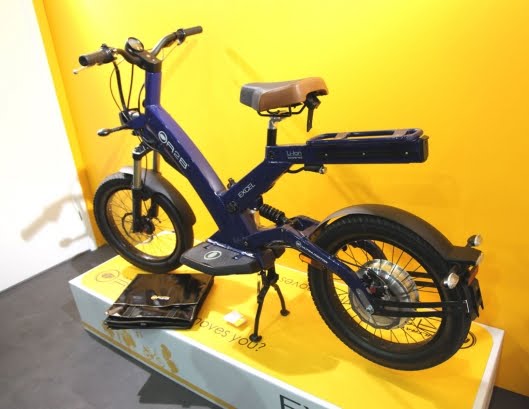For theoretical purposes (until my budget expands), I'm thinking of a bike that serves as a fully electric vehicle.
Bike frame, forks, front and rear hub motors, dual controllers with a single throttle, and no gears, chains, shifters, or pedals (replace with pegs). If you remove the pedals it no longer qualifies as a "bike", so what is it? An electric scooter? Assuming a 48v battery, the top speed is still around 30mph.
Here's an example of local laws regarding scooters.
http://www.motor-scooters-guide.com/texas-scooter-laws.html
You need registration and insurance (can't be that much for a scooter - registration in TX for example is a measly $30/yr). It only references gas powered scooters though, so I don't know how the license endorsements would apply (not a setback for me personally since I already have a class M).
Now, if this vehicle has a top speed of 30mph and is classified as a scooter, can you take it on public roads just like I can with a regular bike?
Or, would it the thing be classified as one of those neighborhood electric vehicles, not legal for public road use?
I did some searching and didn't see anyone who's built something like this before. I was hoping to get a good discussion going on the subject.
Bike frame, forks, front and rear hub motors, dual controllers with a single throttle, and no gears, chains, shifters, or pedals (replace with pegs). If you remove the pedals it no longer qualifies as a "bike", so what is it? An electric scooter? Assuming a 48v battery, the top speed is still around 30mph.
Here's an example of local laws regarding scooters.
http://www.motor-scooters-guide.com/texas-scooter-laws.html
You need registration and insurance (can't be that much for a scooter - registration in TX for example is a measly $30/yr). It only references gas powered scooters though, so I don't know how the license endorsements would apply (not a setback for me personally since I already have a class M).
Now, if this vehicle has a top speed of 30mph and is classified as a scooter, can you take it on public roads just like I can with a regular bike?
Or, would it the thing be classified as one of those neighborhood electric vehicles, not legal for public road use?
I did some searching and didn't see anyone who's built something like this before. I was hoping to get a good discussion going on the subject.





